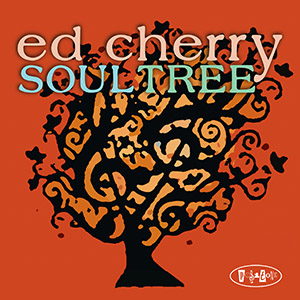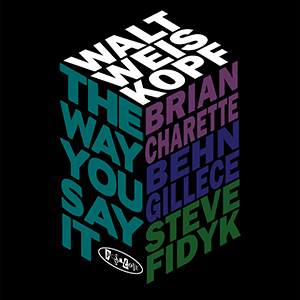 Saxophonist and composer Walt Weiskopf has been a major contributor in the New York (which is to say, world-wide) jazz scene since the early 1980s. After completing studies at the prestigious Eastman School of Music, Weiskopf joined the Buddy Rich Big Band followed by a fourteen-year tenure with the Toshiko Akiyoshi big band. During his time with Akiyoshi and beyond, Weiskopf began recording his own albums playing almost exclusively original music with a variety of groups. Weiskkopf also began his long-running and current association with Steely Dan.
Saxophonist and composer Walt Weiskopf has been a major contributor in the New York (which is to say, world-wide) jazz scene since the early 1980s. After completing studies at the prestigious Eastman School of Music, Weiskopf joined the Buddy Rich Big Band followed by a fourteen-year tenure with the Toshiko Akiyoshi big band. During his time with Akiyoshi and beyond, Weiskopf began recording his own albums playing almost exclusively original music with a variety of groups. Weiskkopf also began his long-running and current association with Steely Dan.
In addition, Weiskopf has become one of the most respected authors in jazz pedagogy starting with his first two books, Coltrane: A Players Guide to His Harmony and The Augmented Scale in Jazz (both co-authored with Ramon Ricker). Other books that followed include Intervalic Improvisation (1994), Around the Horn (2001), Beyond the Horn (co-authored with Ed Rosenberg)(2010) and Understanding the Diminished Scale (2012). Weiskopf has been on the faculty of the Eastman School of Music, Temple University and is currently Coordinator of Jazz Studies at New Jersey City University.
The Way marks Weiskopfs third CD as leader for Posi¬tone, besides at least another dozen for other labels, and represents a change in format, in that Weiskopf uses a modified organ trio as his vehicle of choice. The music, as is his custom, is almost all original, with the exception of three tunes.
To say that Weiskpopf is a master saxophonist is to overstate the obvious. Weiskopf has a clear, clean, centered sound, lickitey-split technique and personality to spare. That covers the “How To Play” side. On the “What to play” side, Weiskopfs melodic, harmonic and rhythmic acumen are massive. All of these attributes are eminently clear in the opening track, a medium-up-tempo blues, Coffee and Scones.
The quirky melody is played by unison tenor and vibes with Weiskopf taking the first solo. As mentioned before, Weiskopf has lots of personality in his playing, beginning with the fact that he plays with no vibrato at all and ends long pitches by just stopping the air, no taper at all. Both of these conditions contribute to his unique voice, but there’s more. Yet another factor are the notes and harmonies that Weiskopf uses. Each chorus that he plays finds him going down a different harmonic path, allowing him to keep the listener interested and on the edge of their seat all at once. Good solos by Gillece and Charette as well.
Inntoene, a barnburner taken at warp speed, is an example of good straight-a-head blowing. Tenor and vibes play the intricate melody once again, with Weiskopf taking the first solo, barreling down the highway, dropping one cleanly executed line after another like some many bombs over his shoulder.
The first of the tunes not written by Weiskopf is the now obscure Candy, by Alex Kramer (lyrics by Mack David & Joan Whitney). Performed as a ballad, for me, this is the money tune of the recording. Weiskopf plays the melody and goes right into his solo chorus paying homage to John Coltrane, with a touch of Jerry Bergonzi. His reading of the melody is just beautiful, and his solo is a study in “this is what a jazz player should be able to do with a tune,” playing it from every angle while still keeping all the music intact.
Segment, by Charlie Parker is another up-tempo gem, with Weiskopf and company just gliding through the changes and the changes of key with ease. Again, Weiskopf displays a complete understanding of harmony and the post-bebop language.Never at a loss for an idea, his lines just flow from one to the other. After a brief two-chorus romp from Weiskopf, Gillece plays his own well executed solo. Tenor and vibes trade eights, then fours for a chorus each before a shout chorus and the final reading of the melody.
The title tune, a prety ballad by the leader closes the CD. The melody is shared by tenor and vibes followed by short solos by Charette and Weiskopf. The mellow feel of the tune lets you down easy after the action packed recording.
Walt Weiskopf is a power with which to be reckoned; if you are not familiar with his playing, this recording is a great place to start to get to know him.
Billy Kerr – Saxophone Today
 Walt Weiskopf wrote the book on jazz harmonics and improvisation…actually about ten of so books on those topics. But the best demonstration of his firm grasp on the building blocks for good jazz rests in his records, and his fifteenth one, The Way You Say It (April 8, 2016, Posi-Tone Records), is the latest chapter of his recorded book of work.
Walt Weiskopf wrote the book on jazz harmonics and improvisation…actually about ten of so books on those topics. But the best demonstration of his firm grasp on the building blocks for good jazz rests in his records, and his fifteenth one, The Way You Say It (April 8, 2016, Posi-Tone Records), is the latest chapter of his recorded book of work. Having co-led three sessions with vibraphonist Behn Gillece on Posi-Tone Records, saxophonist and composer Ken Fowser is a staple of the imprint. However, he’s just now releasing his first album for Posi-Tone under his name alone. The aptly titled Standing Tall proves an auspicious debut, as Fowser displays his lush and heady tenor sound on a set of bluesy original compositions. Leading a like-minded quintet, the New York-based saxophonist evinces the classic hard-bop era, finding simpatico tones and phrases in frontline partner Josh Bruneau’s trumpet and Rick Germanson’s piano. Bassist Paul Gill and drummer Jason Tiemann provide sensitivity and propulsion in equal measures, and the ensemble should hit the sweet spot for fans of Blue Note’s golden age. In fact, “Head Start,” included here, opens the album with a riff-rich tune that wouldn’t have sounded out of place on an Art Blakey and the Jazz Messenger’s album. Fowser, Bruneau and Germanson take turns on soulful solos, while Tiemann’s stick work drives the team.
Having co-led three sessions with vibraphonist Behn Gillece on Posi-Tone Records, saxophonist and composer Ken Fowser is a staple of the imprint. However, he’s just now releasing his first album for Posi-Tone under his name alone. The aptly titled Standing Tall proves an auspicious debut, as Fowser displays his lush and heady tenor sound on a set of bluesy original compositions. Leading a like-minded quintet, the New York-based saxophonist evinces the classic hard-bop era, finding simpatico tones and phrases in frontline partner Josh Bruneau’s trumpet and Rick Germanson’s piano. Bassist Paul Gill and drummer Jason Tiemann provide sensitivity and propulsion in equal measures, and the ensemble should hit the sweet spot for fans of Blue Note’s golden age. In fact, “Head Start,” included here, opens the album with a riff-rich tune that wouldn’t have sounded out of place on an Art Blakey and the Jazz Messenger’s album. Fowser, Bruneau and Germanson take turns on soulful solos, while Tiemann’s stick work drives the team.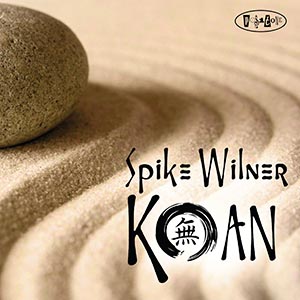 We find with pleasure the New York pianist Spike Wilner four years after “The Tenderness” previous album which borrowed its title (and the jacket picture) to a work of his grandmother, the artist Marie Wilner (born in 1910). Koan with his reference to the Buddhist concept of spiritual awakening and his picture in the Zen spirit, we find it very touching feature of a musician lucid style that remains completely faithful to the soul of jazz by an accomplished master of harmonies and loosely ternary rhythms (I’ll See You Again …), meaning subtle melodic lines, the freedom left to the imagination in a formal setting respectful of teaching elders. Formed in the school of ragtime, stride piano and faithful to swing but fully engaged in his time, Spike Wilner knows how to take the listener on a seemingly light path which gradually drift towards the more daring harmonic development of his own compositions or interpretation he gives of themes borrowed from Duke Ellington (Warm Valley, Gypsy Without a Song), Tadd Dameron (Hot House) or Ornette Coleman (a Lonely Woman flipping …). Totally away from modes of gender (the piano-bass-drums trio in 2000 and his photographs) and not out of phase so far, the pianist and his accomplices discrete surely advancing on a path altogether rather classical but never outdated. The art of jazz piano in all its nobility and sensitivity used by a musician who is also a linchpin of the New York club Smalls.
We find with pleasure the New York pianist Spike Wilner four years after “The Tenderness” previous album which borrowed its title (and the jacket picture) to a work of his grandmother, the artist Marie Wilner (born in 1910). Koan with his reference to the Buddhist concept of spiritual awakening and his picture in the Zen spirit, we find it very touching feature of a musician lucid style that remains completely faithful to the soul of jazz by an accomplished master of harmonies and loosely ternary rhythms (I’ll See You Again …), meaning subtle melodic lines, the freedom left to the imagination in a formal setting respectful of teaching elders. Formed in the school of ragtime, stride piano and faithful to swing but fully engaged in his time, Spike Wilner knows how to take the listener on a seemingly light path which gradually drift towards the more daring harmonic development of his own compositions or interpretation he gives of themes borrowed from Duke Ellington (Warm Valley, Gypsy Without a Song), Tadd Dameron (Hot House) or Ornette Coleman (a Lonely Woman flipping …). Totally away from modes of gender (the piano-bass-drums trio in 2000 and his photographs) and not out of phase so far, the pianist and his accomplices discrete surely advancing on a path altogether rather classical but never outdated. The art of jazz piano in all its nobility and sensitivity used by a musician who is also a linchpin of the New York club Smalls.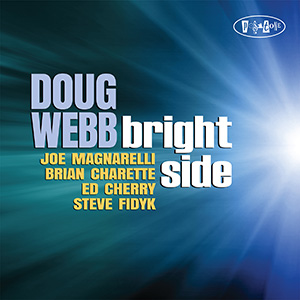 This is a direct descendant of the kind of jazz record that took jazz from smoky, late night New York clubs to the rec rooms of then nascent suburban sprawl. With a crew of leaders backing up the first call sax man, this is a perfect example of where jazz meets commercial vibes and coming out none the worse for wear. Pure jazz for pure jazzbos, listening dates don’t come any Better than this. Well done.
This is a direct descendant of the kind of jazz record that took jazz from smoky, late night New York clubs to the rec rooms of then nascent suburban sprawl. With a crew of leaders backing up the first call sax man, this is a perfect example of where jazz meets commercial vibes and coming out none the worse for wear. Pure jazz for pure jazzbos, listening dates don’t come any Better than this. Well done.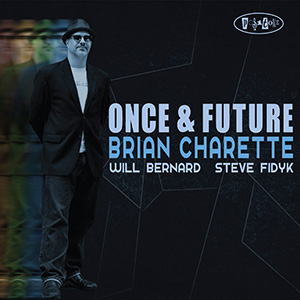 In every jazz lover’s mind there exists the perfect Hammond B-3 organ player. Whether that ultimate B-3 technician is Jimmy Smith, Charles Earland, Larry Young or Shirley Scott, certain defining parameters exist, regardless of the individual player.
In every jazz lover’s mind there exists the perfect Hammond B-3 organ player. Whether that ultimate B-3 technician is Jimmy Smith, Charles Earland, Larry Young or Shirley Scott, certain defining parameters exist, regardless of the individual player.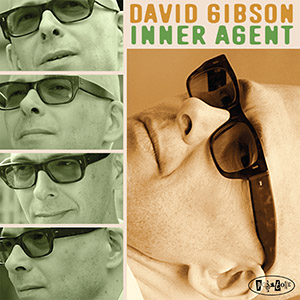 When trombonist David Gibson put out “Boom” last year, one listen and you knew this guy likes working with no net. Told me the feeling was exhilarating to make music this way. It’s also quite fulfilling to listen to and see live, something I made sure happened with David Gibson.
When trombonist David Gibson put out “Boom” last year, one listen and you knew this guy likes working with no net. Told me the feeling was exhilarating to make music this way. It’s also quite fulfilling to listen to and see live, something I made sure happened with David Gibson.